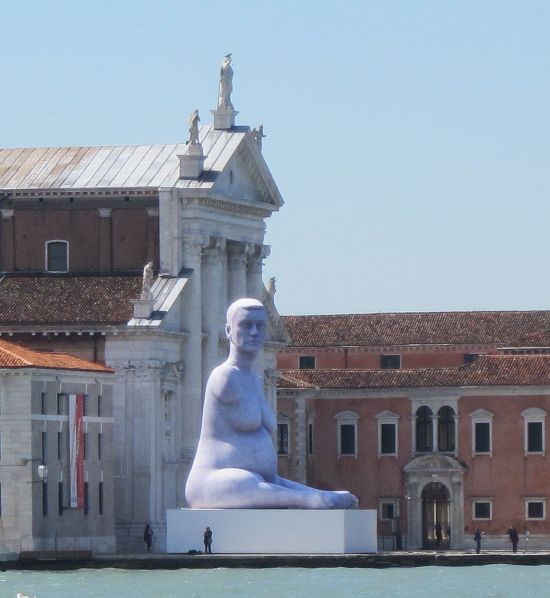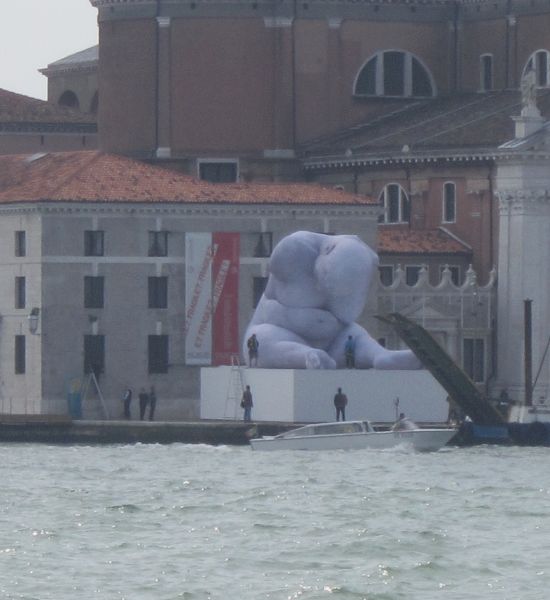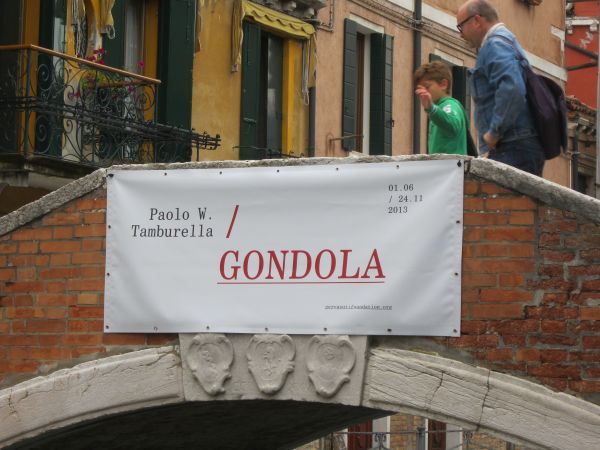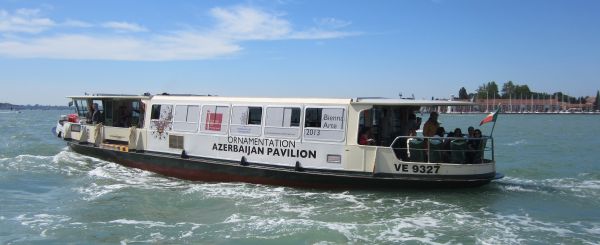
Despite the fact that “Biennale” literally means bi-annual (that is, every two years), this extravaganza of art has been broken up into so many different pieces — architecture, dance, music, etc. — that it has become, in some form or other, an annual event. Which means that at the beginning of June every year we live a week or so of intense spectatorhood at the swarming of the international art-scenesters.
For the brief period leading up to the inauguration (June 1 this year), we are entertained by an extraordinary spectacle of garb and behavior — I don’t mean this as a compliment — and the neighborhood businesses, especially bars and restaurants, get to earn some real money. If the visitors were the proverbial hay, the Biennale would be the proverbial sun, and the local merchants would be scything around the clock.
Short as this interlude may be, it causes all sorts of disorderly thoughts to rush into my brain — thoughts about art, thoughts about what it’s for and how it works, why or whether it matters, and thoughts about people (those are usually nasty, brutish and short — the thoughts, I mean, not the people).
I spent most of yesterday attempting to write them down and organize them so I could share their brilliance with you. But I gave up. Based on the art we see outside here, and the people who pursue it, art has become something so silly that to treat it as something serious has become an art form in itself.
The neighborhood is pulsating with journalists, art-watchers, art-commenters, and art-participaters. And I suppose also some lower-voltage art-perpetrators too, but I doubt that they are wandering around via Garibaldi, or blocking the streets drinking their spritzes where the space is narrowest (“You need to get through here? How quaint”), or leaning against things talking into their phones, drawing attention to themselves. My experience is that real artists rarely look all that important. Irving Penn looked like a vinyl-siding salesman.

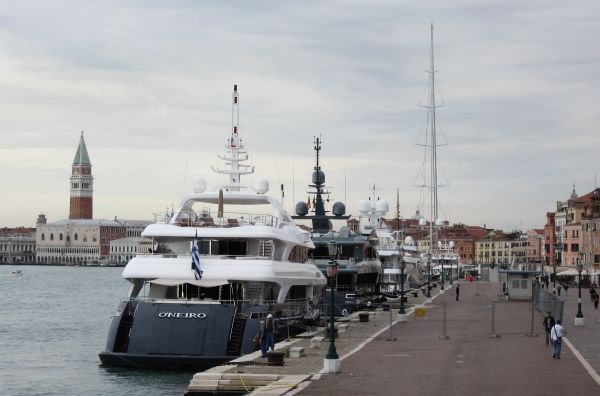
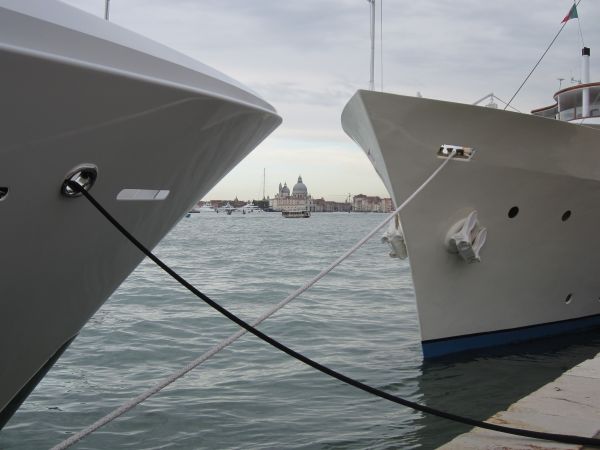
Every year there is one major work of art that takes center stage, or tries to. They are always put out along the fondamente, obviously, where they can’t not be seen.
The first year I was here, it was a monstrous concrete hand, half-emerging from the pavement, fingers reaching upward in what might have been a metaphoric expression of yearning — or pleading, or grasping — for freedom. Another year it was a five-story-high sort of stele, glowing night and day with a violently-blue neon sort of waterfall. That blighted the landscape for quite a while. Then there was the decrepit traditional wooden sailing boat from the Comoro Islands, encumbered with two ponderous dumpsters, that floated for months tied to some pilings as it slowly came apart. Oh — and there was the tree, planted on a specially-constructed platform, in front of the Giardini where there are masses of trees.
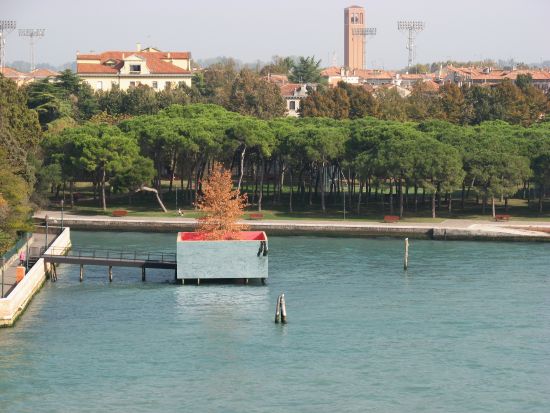
This year it is a gigantic figure on the island of San Giorgio sometimes known as “Alison Lapper Pregnant,” but at the moment called “Respiro” (“breath”). It is a portrait of English artist Alison Lapper, who was born as shown here (except obviously not 11 meters/33 feet high, purple, and inflatable). Don’t try to understand this by yourself; only Marc Quinn, the artist, and his assorted interpreters can tell you what it really means.
It’s actually very simple. I translate from a photo caption in Panorama.it: This handiwork “proposes a new model of feminine heroism in which love, maternity and vitality reach an unpredictable form and an unexpected peak.” It also is part of a “voyage from the origins of life” and “celebrates fear and wonder in the face of the world in which we live.” Other resonant phrases such as “the beauty and mystery of creation and life” defeat my capacity to link language to thought.
In case you might suppose that this artifact were some self-indulgent creation meant only to stupefy the Biennalists, or that the Palladian monument of the church of San Giorgio might be an inappropriate location for showing it (Peasant!), you should know that it has been exhibited at all sorts of places. It’s been in London since 2005 and was understandably given pride of place at the Special Olympics in London in 2012; other sites range from places associated with some sort of violence, such as a military training field in Tripoli, Libya; in Paris (protests against gay marriage); in Srinagar (protests in Kashmir); in Moore, Oklahoma (tornado tragedy), to more frivolous events which needed to draw more than usual attention to themselves, such as the competition in Berlin of “German models of the future,” to the beach at Long Branch, New Jersey, to Indianapolis, Indiana. She’s traveled more than I have.
With the deepest respect to the subject of this creation (I can’t call it a statue, but I can’t call it a balloon, either), the thoughts it inspires are not related to life, beauty, mystery, fear or wonder. Because I already know what it is. Like everything else on earth, it is a business. Or rather, part of a business. Mining mercury, molding ocarinas, feeding orphans, shoeing horses — all businesses.
Business is one of the fundamental building blocks of life, right in there with carbon, nitrogen, oxygen, hydrogen, phosphorus and sulfur. And here at the Biennale we see the business of art, which — say what you will — has very little to do with life, beauty, mystery, or wonder, though maybe fear could be seen as playing a part.
Back to Alison Lapper as depicted by her plastic portraitist. I’m all for symbolism, but I am repelled by fabricated symbolism that is tacked onto an invention which is essentially intended to promote the inventor. Artists promote themselves because they want to sell you their stuff. Although Ms. Lapper collaborated in this work for her own reasons, she is merely the vehicle by which Marc Quinn intends to make you notice him. If all he wanted to do was show the beauty and wonder of life, he wouldn’t have put his name on it.
I’m not going to say any more, because this is the point at which my thoughts diverge from my ability to express them.
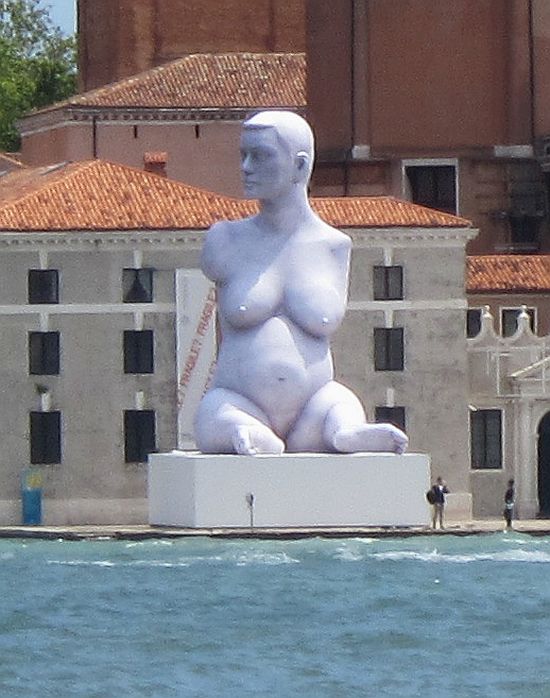
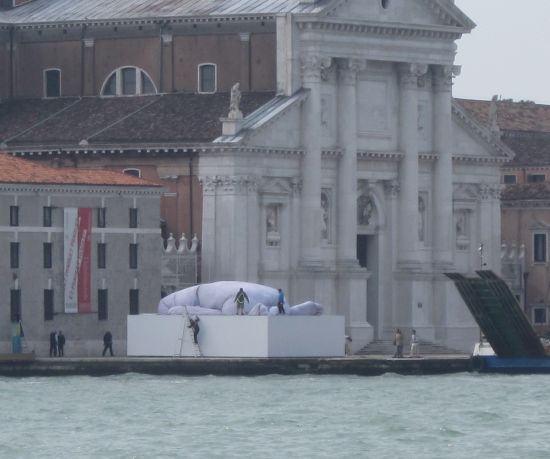
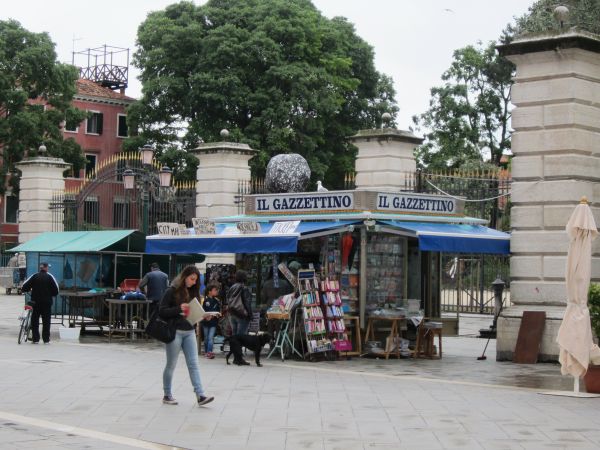

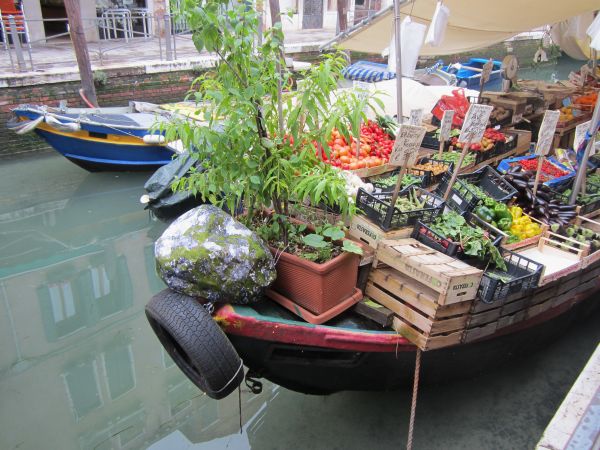
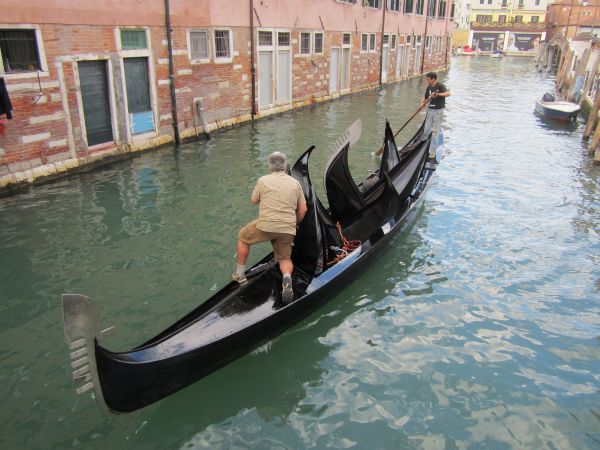
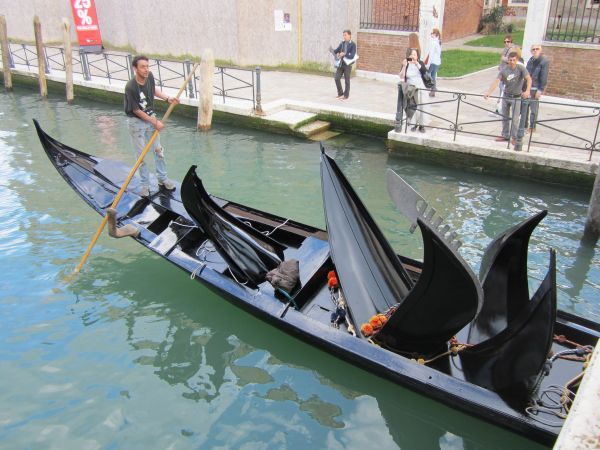
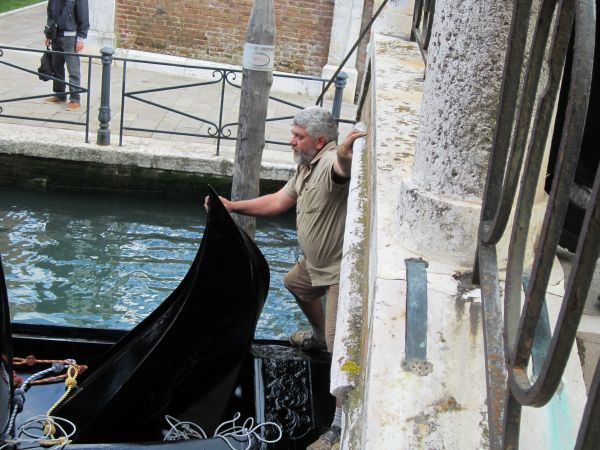
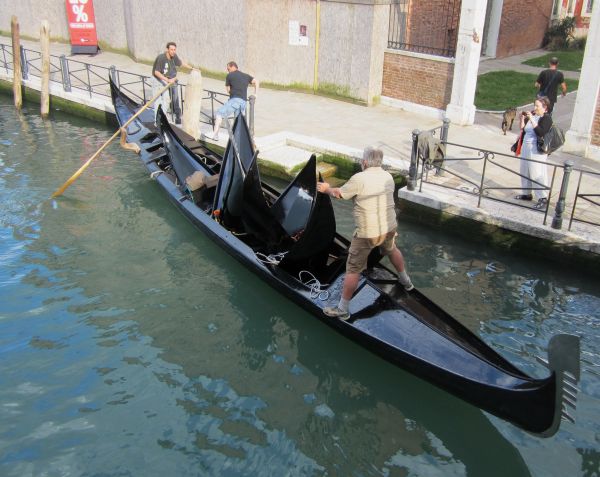
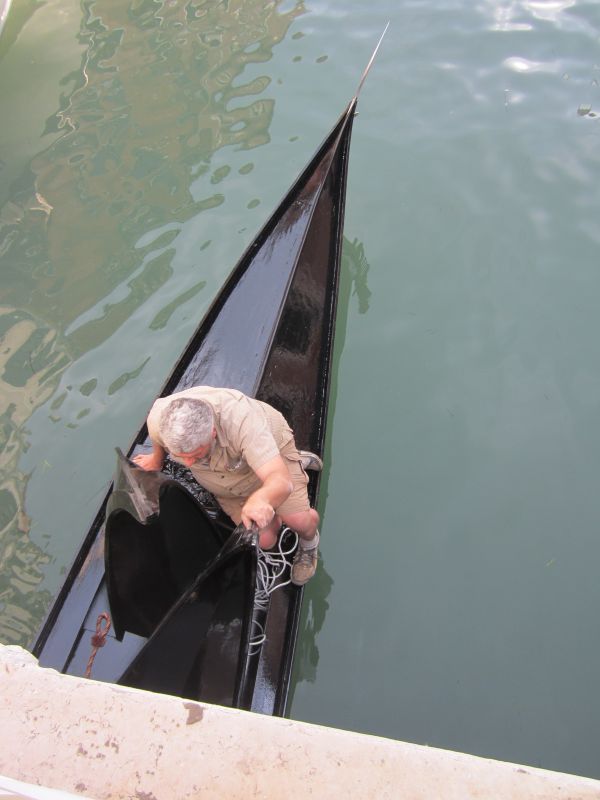
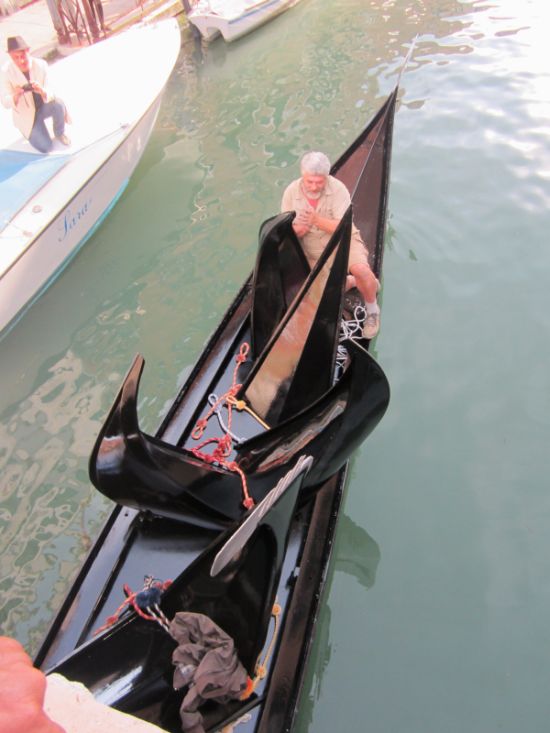
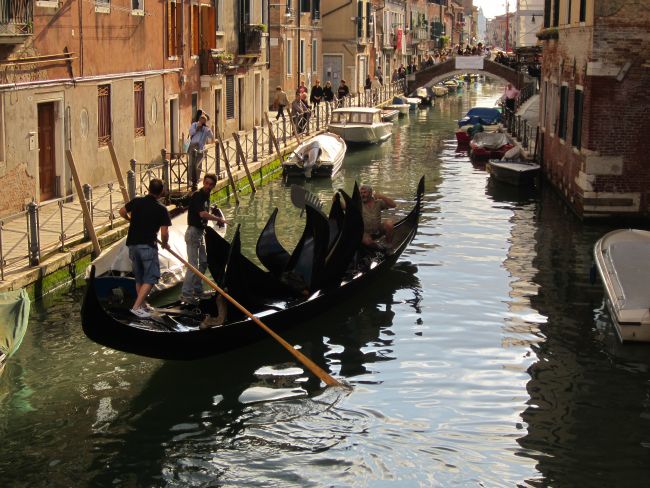
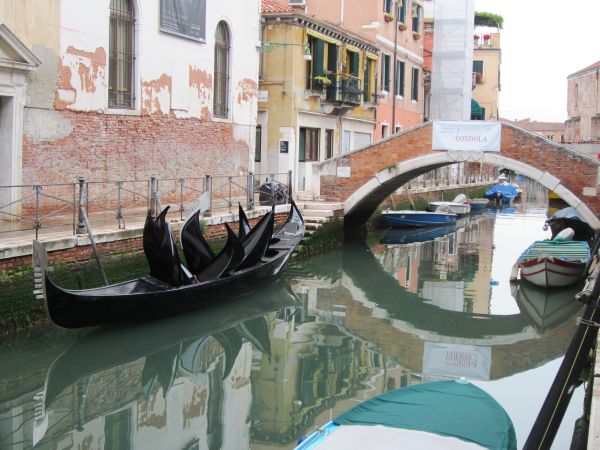
I will help you understand what this boat full of what looks like mussel-shells actually means: Study the explanation given here, take two aspirin, or a large grappa, or stick your finger in a live socket, and call me in the morning. It’s all art. All of it. Everything. Even your dirty-laundry basket and your old broken bike. You’re wasting your time doing whatever you do — you could be here in Venice, making people admire you.
Speaking of which, there is a wonderful scene in an extremely wonderful movie called “Le Vacanze Intelligenti” (The Intelligent Vacation) with Alberto Sordi. He and his wife are a late-middle-aged couple, fruit-and-vegetable sellers in Rome, whose highly educated children organize their summer holiday for them. No going to the beach this year — the parents are going to learn something! So the itinerary sends them to tour Etruscan tombs, and go to avant-garde concerts in Florence, and they finally end up in Venice, at the Biennale.
It’s summer, it’s sweltering, they’re exhausted, and while he goes off in search of a cold drink for her, she slumps, comatose, eyes shut, into the only available chair, under a tree. And people stop to admire her, and talk about what the artist had in mind, and how skillful he was, and how much she might cost if somebody wanted to buy her. The moment she comes to and realizes she’s been seriously mistaken for art is something sublime.

